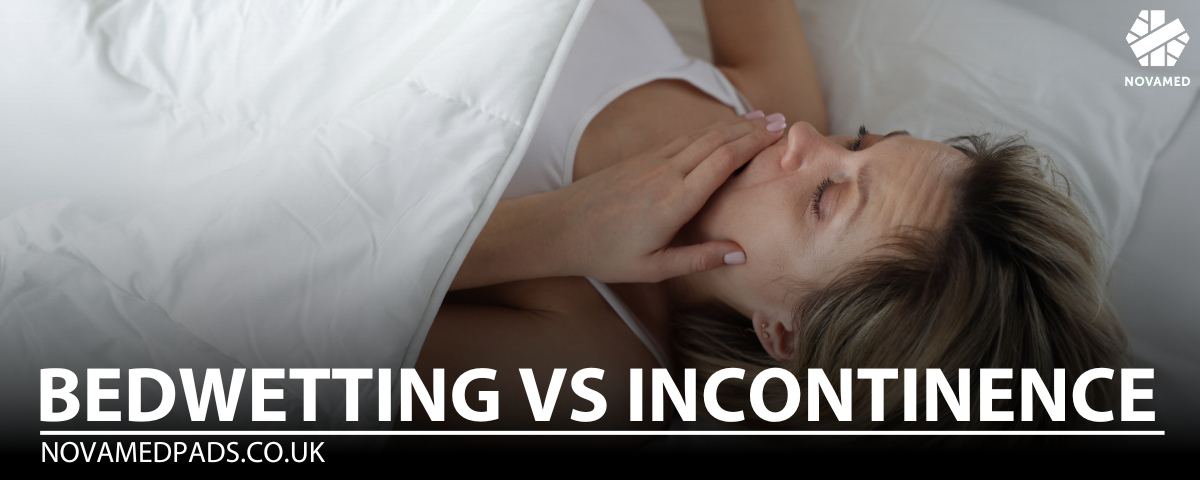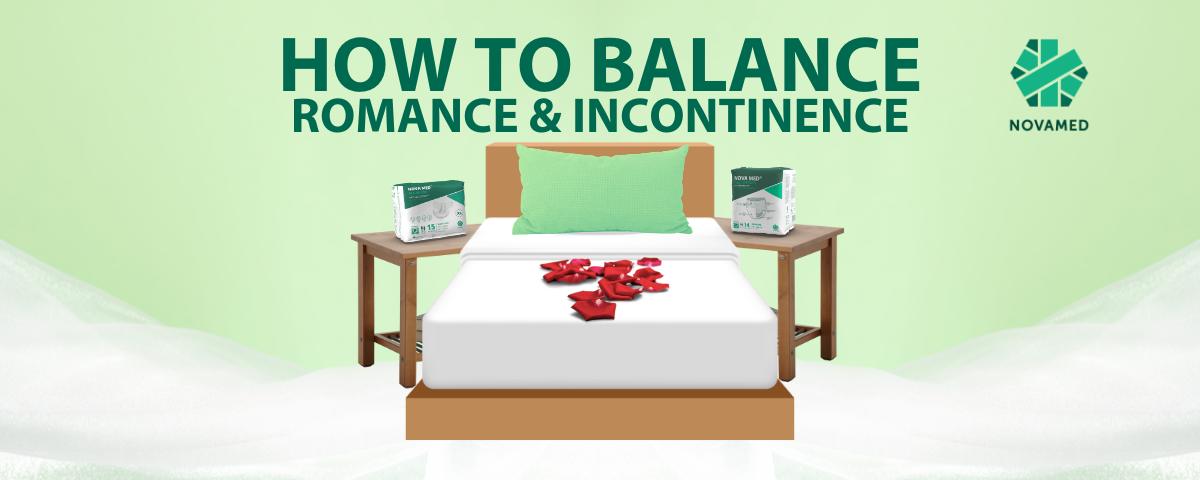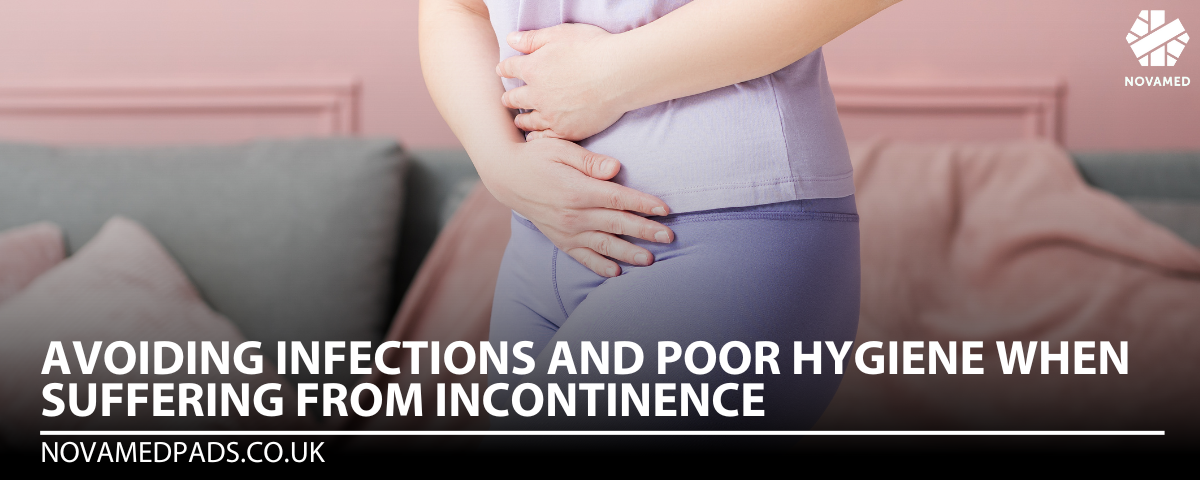
Bedwetting vs. Incontinence: The Key Differences
Bedwetting and incontinence are often confused, but they are different conditions that require unique approaches to management and treatment. Understanding these differences is essential for effective care, especially when dealing with children and adults.
Bedwetting: A Common Childhood Issue

Bedwetting, also known as nocturnal enuresis, is a condition mainly seen in children where they wet the bed during sleep without realising it. It is a common problem, affecting about 15% of children by the age of 5, and as many as 10% of children worldwide experience this issue (Goulardins et al., 2017). Most children outgrow bedwetting as they get older, but if it continues past the age of 7, it may be worth looking into further to rule out any underlying medical or emotional issues (Finnikin, 2017).
The reasons for bedwetting are varied and can include a family history of the condition, a small bladder, or a child's body not yet being able to recognise when the bladder is full during sleep. Research also suggests that factors like producing too much urine at night, an overactive bladder, and delays in the development of the nervous system can contribute (Goulardins et al., 2017). Stress and certain health conditions, such as urinary tract infections, can also play a role (Almaghlouth et al., 2023).
Treatment for bedwetting often involves simple strategies like reducing drinks before bedtime, making sure the child goes to the toilet before bed, and using bedwetting alarms that wake the child if they start to wet the bed. These alarms can be very effective in helping the child learn to wake up when they need to urinate (Caldwell et al., 2020). In some cases, medicines that reduce the amount of urine produced at night, such as desmopressin, are used (Finnikin, 2017).
Incontinence: A Broader Issue Across Age Groups

Incontinence, on the other hand, is when a person loses control of their bladder and leaks urine. This can happen to people of all ages, but it is more common in adults, especially women and older people. Unlike bedwetting, incontinence can occur at any time, day or night (Musco et al., 2021).
There are several types of urinary incontinence:
- Stress Incontinence: This occurs when activities like coughing, sneezing, or exercising put pressure on the bladder, causing leaks. It is particularly common in women who have had children or gone through menopause, as these events can weaken the muscles that support the bladder (Palacios & Ramírez, 2020).
- Urge Incontinence: Also known as an overactive bladder, this type involves a sudden, strong urge to urinate followed by leakage. It can be caused by a range of factors, including nerve problems or bladder irritation (Palacios & Ramírez, 2020).
- Mixed Incontinence: This includes symptoms of both stress and urge incontinence. Identifying which type is more dominant is important for deciding on the best treatment (Kim, 2023).
- Overflow Incontinence: This occurs when the bladder doesn’t empty properly, leading to frequent or constant dribbling of urine. It is often linked to conditions that affect bladder function, such as diabetes or spinal injuries.
Key Differences Between Bedwetting and Incontinence
While both conditions involve leaking urine, the key differences are when it happens, what causes it, and who it affects. Bedwetting usually happens at night and mostly in children, who often outgrow it. Incontinence, however, is a broader term that refers to various types of urine leakage, affecting both children and adults at any time of day or night (Richardson, 2018).
The emotional impact also differs between the two. Bedwetting can cause distress in children, affecting their self-esteem and social life. Incontinence in adults, especially older adults, can lead to isolation, depression, and a lower quality of life. Caring for someone with incontinence, particularly an older person, can also be very demanding (akpınar et al., 2023).
Treatment Approaches

Treatment for bedwetting often involves lifestyle changes, such as limiting drinks before bed, using bedwetting alarms, or in some cases, medication. Bedwetting alarms are especially useful as they help train the child to wake up before wetting the bed, leading to fewer wet nights and possibly long-term improvement (Caldwell et al., 2020).
Incontinence treatment varies depending on the type and severity of the condition. Stress incontinence can be managed with pelvic floor exercises (also known as Kegel exercises), which strengthen the muscles that support the bladder (Samar et al., 2023). Urge incontinence may require bladder training, medications to relax the bladder muscle, or, in some cases, treatments that involve stimulating the nerves that control the bladder. Surgery is an option for severe cases, especially in stress incontinence, where procedures like sling surgery can provide significant relief (Kim, 2023).
Understanding these differences can help in choosing the right treatment and reducing the impact of these conditions on daily life. It is important for individuals and caregivers to work closely with healthcare professionals to develop a tailored treatment plan that addresses specific needs.
Bladder and bowel incontinence may be caused by conditions which can be treated medically. Please consult your physician for medical advice and guidance.
References
- Finnikin, L. (2017). Bedwetting in children. InnovAiT, 10, 729-733.
- Goulardins, J., Pereira, R. P., & Tanaka, C. (2017). Nocturnal Enuresis Treatment: New Perspectives. Journal of Novel Physiotherapies, 7, 1-3.
- Almaghlouth, A. K., Alquraini, M., Alsaleh, N. A., Almulhim, M. A., Alhabdan, T., Alsalman, M. A., & Alburayh, A. A. (2023). Parental Beliefs About the Causes, Treatments, and Medical Assistance for Children With Nocturnal Enuresis in the Eastern Region of the Kingdom of Saudi Arabia. Cureus, 15.
- Caldwell, P. H. Y., Codarini, M., Stewart, F., Hahn, D., & Sureshkumar, P. (2020). Alarm interventions for nocturnal enuresis in children. Cochrane Database of Systematic Reviews.
- Musco, S., Ecclestone, H., 't Hoen, L. T., Blok, B., Padilla-Fernández, B., Del Popolo, G., Groen, J., Pannek, J., Kessler, T., Karsenty, G., Phé, V., Sartori, A. M., Castro-Díaz, D., & Rizwan, H. (2021). Efficacy and Safety of Surgical Treatments for Neurogenic Stress Urinary Incontinence in Adults: A Systematic Review. European Urology Focus.
- Palacios, S., & Ramírez, M. (2020). CO2 laser therapy in stress and urge urinary incontinence.
- Richardson, D. (2018). Assessment and treatment of nocturnal enuresis in children and young people. Nursing children and young people, 30(5), 40-47.
- Kim, Y. J. (2023). Predictors of outcomes after the trans-obturator tape procedure in females with equal severity for stress and urge mixed urinary incontinence. Journal of Medicine and Life Science.
- Samar, M., Nahid, R., Mahsa, B., & Alimohammadi, N. (2023). The effect of Kegel exercises and pelvic floor physiotherapy on the improvements of stress urinary incontinence and urge incontinence in women with normal vaginal delivery. Current Women’s Health Reviews.
- Akpınar, n. b., Unal, N., & Akpınar, Ç. (2023). Urinary Incontinence in Older Adults: Impact on Caregiver Burden. Journal of Gerontological Nursing, 49(4), 39-46.




